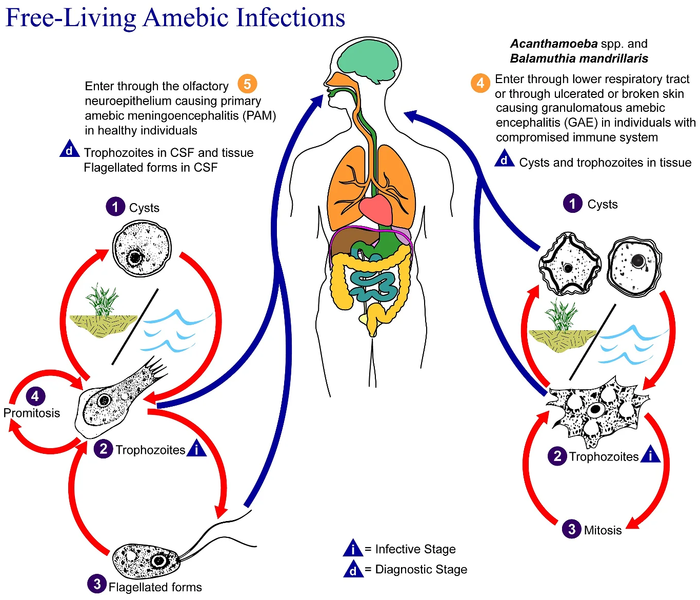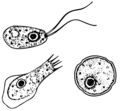Fișier:Free-living amebic infections.png

Mărimea acestei previzualizări: 700 × 600 pixeli. Alte rezoluții: 280 × 240 pixeli | 560 × 480 pixeli | 896 × 768 pixeli | 1.195 × 1.024 pixeli | 1.365 × 1.170 pixeli.
Mărește rezoluția imaginii (1.365 × 1.170 pixeli, mărime fișier: 715 KB, tip MIME: image/png)
Istoricul fișierului
Apăsați pe Data și ora pentru a vedea versiunea trimisă atunci.
| Data și ora | Miniatură | Dimensiuni | Utilizator | Comentariu | |
|---|---|---|---|---|---|
| actuală | 2 februarie 2023 12:24 |  | 1.365x1.170 (715 KB) | Materialscientist | https://answersingenesis.org/biology/microbiology/the-genesis-of-brain-eating-amoeba/ |
| 20 iulie 2008 09:30 |  | 518x435 (31 KB) | Optigan13 | {{Information |Description={{en|This is an illustration of the life cycle of the parasitic agents responsible for causing “free-living” amebic infections. For a complete description of the life cycle of these parasites, select the link below the image |
Utilizarea fișierului
Nicio pagină nu se leagă la această imagine.
Utilizarea globală a fișierului
Următoarele alte proiecte wiki folosesc acest fișier:
- Utilizare la de.wikibooks.org
- Utilizare la en.wiktionary.org
- Utilizare la fi.wikipedia.org
- Utilizare la fr.wikipedia.org
- Utilizare la gl.wikipedia.org
- Utilizare la hr.wikipedia.org
- Utilizare la is.wikipedia.org
- Utilizare la it.wikipedia.org
- Utilizare la pl.wikipedia.org
- Utilizare la te.wikipedia.org
- Utilizare la vi.wikipedia.org
- Utilizare la www.wikidata.org
- Utilizare la zh.wikipedia.org




